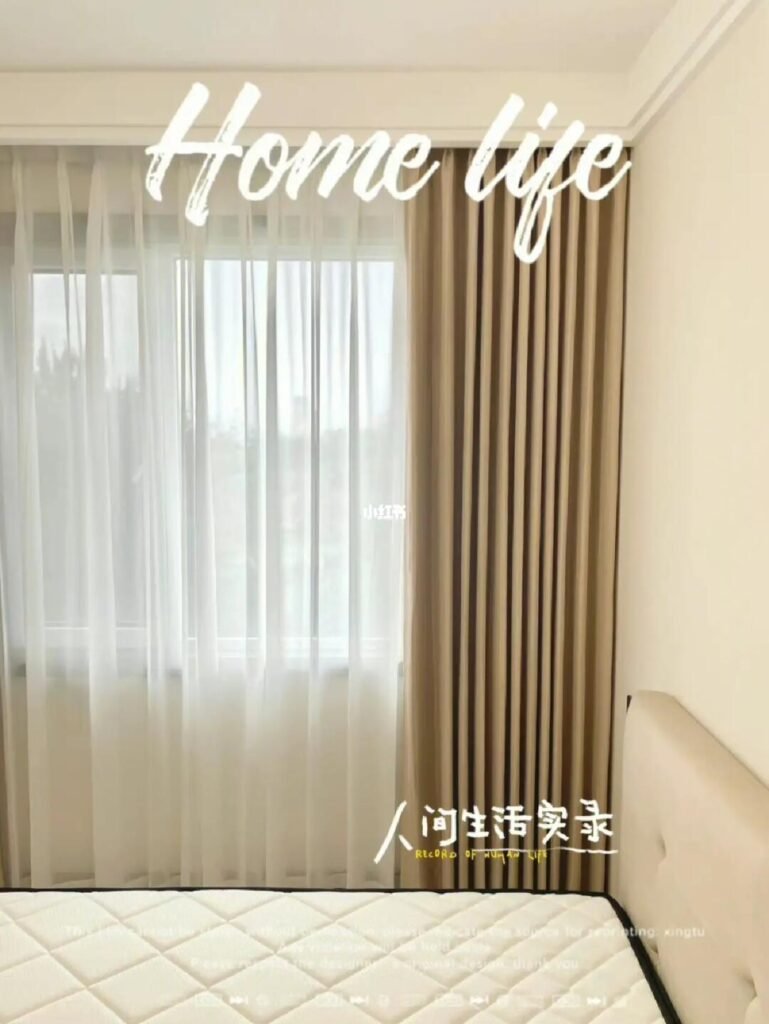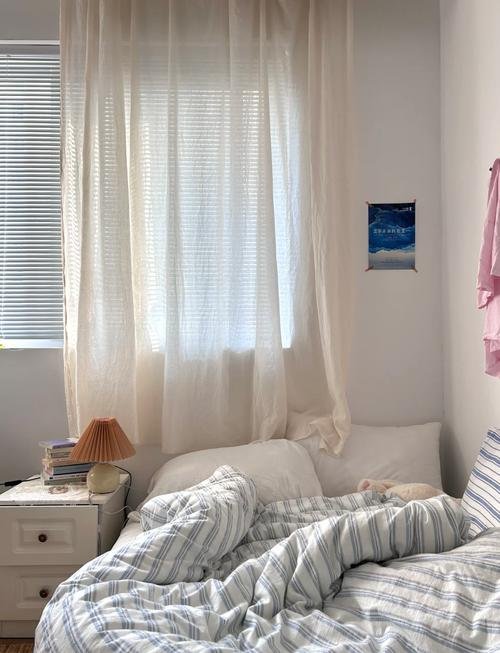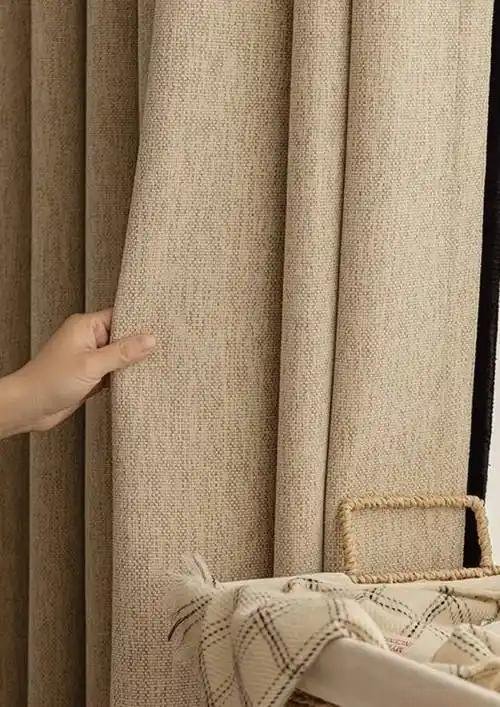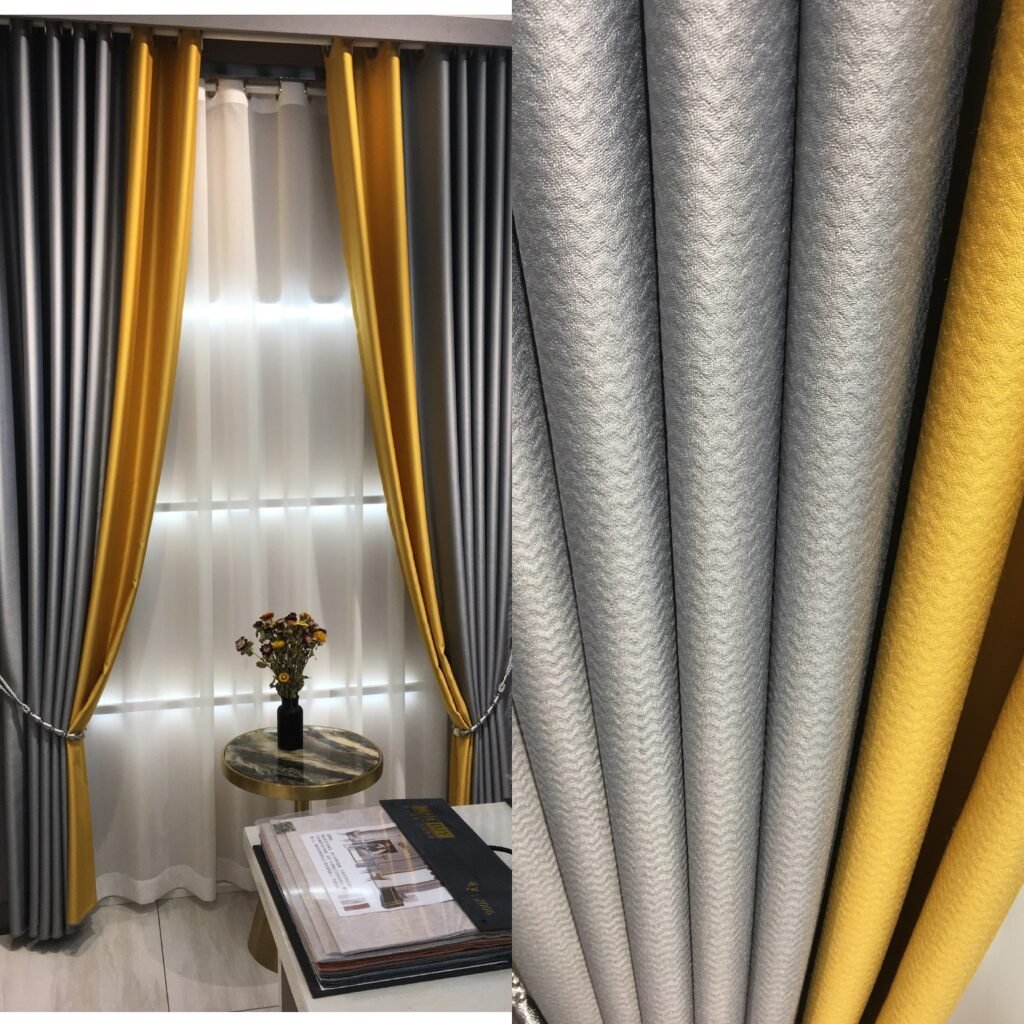When it comes to transforming your bedroom or living room into a haven of comfort and style, the choice of fabric is everything. Cotton has long been celebrated for its unparalleled softness, durability, and versatility—but why does it consistently outperform synthetic alternatives in bedding and curtains?
Cotton’s natural fibers offer a superb balance of breathability, moisture-wicking, and temperature regulation—making it ideal for bedding and curtains alike. Its inherent strength ensures long-lasting performance through countless washes, while its hypoallergenic properties help maintain a healthy indoor environment. From cozy winter nights to breezy summer mornings, cotton adapts seamlessly to your needs.
Imagine curling up under a cloud-like cotton duvet on a crisp autumn evening, or letting gentle cotton drapes filter morning light in a sun-drenched room. In this article, we’ll dive into everything that makes cotton the ultimate choice—from fiber varieties and weave types to eco-certifications and care tips—to help you make an informed, confident decision for your next home textile purchase.
What Makes Cotton the Go-To Fabric for Bedding and Curtains?

Cotton’s appeal lies in its natural comfort and performance: it feels soft against the skin, breathes exceptionally well, and wicks moisture to keep you cool and dry. These qualities directly address the primary needs for both bedding—where temperature regulation impacts sleep quality—and curtains—where light filtering and airflow matter.
Exploring Cotton’s Core Advantages
- Thermal Regulation: How cotton fibers trap air to insulate in winter and release heat in summer.
- Moisture Management: The science behind cotton’s capillary action versus synthetic wicking.
- Skin Health: Analysis of cotton’s hypoallergenic nature compared to common synthetics.
- Durability Metrics: Tensile strength comparison—cotton vs. polyester vs. linen.
| Property | Cotton | Polyester | Linen |
|---|---|---|---|
| Breathability | Excellent | Moderate | High |
| Moisture Wicking | Good | Excellent | Moderate |
| Hypoallergenic | Yes | No | Yes |
| Tensile Strength | 400–600 cN/tex | 500–800 cN/tex | 450–700 cN/tex |
| Average Lifespan | 5–10 years | 3–5 years | 7–12 years |
By examining thermal comfort, moisture control, and longevity, it’s clear why cotton stands out as the preferred fabric for bedding and curtains.
Which Cotton Varieties Deliver the Softest Feel and Long-Lasting Quality?

Not all cotton is created equal. Varieties such as Egyptian, Pima (Supima®), and organic cotton offer distinct advantages in fiber length, softness, and environmental impact. Longer staple lengths translate to smoother, stronger yarns and a more luxurious hand feel—key factors for premium bedding and drapery.
Comparing Top Cotton Varieties
- Staple Length Differences: Charting fiber lengths of upland vs. Pima vs. Egyptian.
- Environmental Footprint: Water usage and pesticide dependence in conventional vs. organic.
- Cost vs. Performance: Price per yard vs. expected lifespan and comfort rating.
- Brand Certifications: Understanding Supima® and Better Cotton Initiative labels.
| Variety | Staple Length | Softness Rating (1–5) | Water Usage (L/kg) | Avg. Price (\$/yard) |
|---|---|---|---|---|
| Upland Cotton | 20–25 mm | 3 | 10,000 | 3.50 |
| Pima Cotton | 27–32 mm | 4 | 8,000 | 6.00 |
| Egyptian | 30–38 mm | 5 | 12,000 | 8.50 |
| Organic Upland | 20–25 mm | 3 | 6,000 | 5.00 |
Understanding these differences helps you choose the right cotton variety for your budget, comfort expectations, and sustainability goals.
How Does Cotton’s Natural Breathability Improve Sleep and Indoor Comfort?

Cotton fibers form a network of tiny air pockets that facilitate constant air circulation, reducing heat buildup and maintaining an even sleeping temperature. In curtains, this breathability allows rooms to stay fresh, reducing stuffiness and improving overall air quality.
The Science of Cotton Airflow
- Fiber Structure Analysis: Microscopic view of cotton vs. synthetic cross-sections.
- Airflow Testing Data: CFM (cubic feet per minute) rates through cotton and polyester weaves.
- Impact on Sleep Cycles: Correlation between bedding breathability and REM sleep duration.
- Indoor Air Quality Metrics: How cotton curtains influence VOC levels and humidity.
| Metric | Cotton Bedding | Polyester Bedding |
|---|---|---|
| Airflow (CFM) | 15 | 8 |
| Average Sleep Temperature (°C) | 18–20 | 20–22 |
| VOC Emissions (mg/m³) | <0.1 | 0.5 |
| Humidity Control (%) | ±5% variation | ±10% variation |
Cotton’s breathable nature not only enhances sleep quality but also promotes healthier living spaces by moderating temperature and humidity.
Are Cotton Textiles Eco-Friendly and Biodegradable?
As more consumers prioritize sustainability, cotton’s biodegradability and renewable origins make it an attractive choice. However, conventional cotton farming can be resource-intensive, so it’s crucial to consider organic and recycled options that minimize environmental impact.
Cotton’s Sustainability Profile
- Life Cycle Assessment: Carbon footprint of cotton vs. polyester.
- Water Footprint Comparison: Conventional vs. organic cotton cultivation.
- Biodegradation Rates: Timeframes for cotton and blended fabrics in landfill.
- Recycling and Upcycling Trends: Post-consumer cotton recycling programs.
| Fabric Type | CO₂ Emissions (kg/kg) | Water Footprint (L/kg) | Biodegradation (months) |
|---|---|---|---|
| Conventional | 2.0 | 10,000 | 6–12 |
| Organic | 1.2 | 6,000 | 6–12 |
| Polyester Blend | 9.5 | 2,000 | 100+ |
| Recycled Cotton | 1.5 | 3,000 | 6–12 |
By choosing certified organic or recycled cotton, you can enjoy the benefits of this exceptional fabric while lessening your ecological footprint.
Do Cotton Bed Sheets and Curtains Require Special Care or Maintenance?

Cotton is remarkably easy to care for: it tolerates machine washing, resists pilling, and softens with each wash. Proper laundering techniques preserve color, strength, and dimensional stability—key to maintaining the fabric’s natural appeal over time.
Care Best Practices for Longevity
- Washing Temperature Guide: Optimal settings to prevent shrinkage and color bleeding.
- Detergent and Additive Recommendations: pH-balanced soaps and eco-friendly softeners.
- Drying Methods: Line-dry vs. tumble-dry on low—impact on fiber integrity.
- Storage Tips: Temperature, humidity, and folding techniques to avoid mildew and wrinkles.
| Care Step | Recommended Practice | Impact on Fabric |
|---|---|---|
| Wash Temperature | 30–40°C (86–104°F) | Minimal shrinkage |
| Detergent Type | pH-neutral, enzyme-free | Preserves color |
| Dryer Setting | Low heat or air-dry | Prevents fiber damage |
| Ironing | Medium heat, steam | Restores smoothness |
| Storage Conditions | Cool, dry, breathable container | Reduces mildew risk |
Following these guidelines will keep your cotton bedding and curtains looking and feeling fresh wash after wash.
What Weave Types (e.g., Percale, Sateen) Are Best Suited for Home Textiles?
The weave structure dramatically affects hand feel, drape, and durability. Percale offers a crisp, matte finish and excellent breathability, while sateen delivers a silky sheen and soft drape. Understanding these differences ensures you select the right textile performance for your application.
Weave Comparison and Use Cases
- Percale vs. Sateen: Thread count implications and durability ratings.
- Twill and Jacquard Options: When to choose patterned weaves for curtains.
- Thread Count Myths: Debunking the “higher is always better” misconception.
- Performance Testing: Pilling resistance, abrasion tests, and colorfastness data.
| Weave | Finish | Ideal Use | Durability Rating (1–5) | Breathability Rating |
|---|---|---|---|---|
| Percale | Matte | Bedding, Sheets | 4 | Excellent |
| Sateen | Lustrous | Sheets, Drapes | 3 | Good |
| Twill | Diagonal | Heavy Curtains | 5 | Moderate |
| Jacquard | Patterned | Decorative Drapes | 4 | Moderate |
Armed with this insight, you can match the weave type to your design vision and performance needs.
How Can Cotton Curtains and Bedding Be Customized for Style and Function?
Cotton lends itself beautifully to dyeing, printing, embroidery, and finishing treatments. Whether you need blackout lining for a bedroom or UV-resistant coatings for sunrooms, cotton’s versatility supports a wide range of customizations—helping you achieve both aesthetic and functional goals.
Customization Techniques and Treatments
- Dyeing and Printing: Colorfastness ratings, digital vs. screen printing pros and cons.
- Finishing Options: Anti-wrinkle, stain-resistant, flame retardant—what’s available?
- Lining and Interfacing: Balancing opacity and drape in curtain applications.
- Embroidery & Embellishments: Thread selection, stability, and care considerations.
| Customization | Benefit | Typical Cost Increase |
|---|---|---|
| Digital Printing | Photo-realistic designs | +15–25% |
| Anti-wrinkle Finish | Reduced ironing | +10% |
| Blackout Lining | Total light blockage | +20% |
| UV Coating | Fades protection | +12% |
| Embroidery | Textural, luxury appeal | +30–40% |
These options empower you to tailor cotton textiles precisely to your decorative scheme and functional demands.
Which Certifications (GOTS, OEKO-TEX) Guarantee Cotton Purity and Safety?
Certifications provide assurance around chemical use, environmental practices, and social responsibility. GOTS (Global Organic Textile Standard) and OEKO-TEX® Standard 100 are the most recognized marks, but others like Fair Trade and Better Cotton Initiative also offer valuable guarantees.
Certification Criteria and Impact
- GOTS vs. OEKO-TEX: Scope, testing protocols, and label meanings.
- Supply Chain Transparency: How certifications enforce traceability.
- Consumer Trust Metrics: Survey data on buyer preference for certified textiles.
- Cost Implications: Price premiums and ROI for certified cotton products.
| Certification | Key Focus | Testing Frequency | Approx. Price Premium |
|---|---|---|---|
| GOTS | Organic content & impact | Annual audits | +20–30% |
| OEKO-TEX Standard | Harmful substances | Batch testing | +10–15% |
| Fair Trade | Labor standards | Biennial audits | +5–10% |
| Better Cotton | Sustainable farming | Quarterly review | +8–12% |
Choosing certified cotton not only protects your health and the environment but can also enhance brand credibility and customer loyalty.
Cotton’s blend of comfort, performance, and sustainability makes it the undisputed champion for bedding and curtains. From selecting the right fiber variety and weave type to customizing treatments and ensuring eco-certified sourcing, you now have the knowledge to elevate your home textiles.
Ready to experience the unmatched quality of cotton for your next bedding or curtain project? Contact Szoneier today for free design consultation, low-MOQ customization, rapid sampling, and 100% quality assurance. Let us help you bring your vision to life with premium, tailor-made cotton fabrics—reach out now and transform your space!

